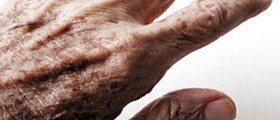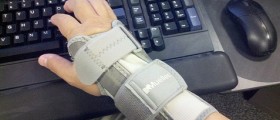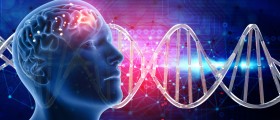
Dystonia is a neurological movement disorder characterized by muscle contractions that cause twisting, abnormal postures and repetitive movements. In many cases, this condition is hereditary, but it may also occur as a result of birth-related abnormalities, physical trauma, and exposure to toxins, infection, and even reaction to certain medical drug treatments. There is no cure for this disease but many available treatment options are there to help minimize the symptoms of the disorder and help patients to live better. Dystonia usually occurs only when a child wants to make voluntary movement. Therefore, doctors believe that it occurs with the wrong pattern of muscle activity that results in a movement different from the intended one. According to the official statistics, this disease currently affects about 300,000 individuals in North America.Signs and symptoms of dystonia in children
Dystonia is often diagnosed based on the symptoms of the disorder. Doctors usually diagnose this disease by looking at the movements of the body and by conducting other complementary tests, to make sure there is no other underlying disease that causes problems in movement. There are many different forms of dystonia and symptoms of each form appear different. This condition is associated with varying levels of disability and pain, ranging from mild to extremely severe and disabling. Symptoms that are common for all different forms of dystonia include repetitive, patterned and twisting involuntary muscle movements.Types of dystonia in children
Different forms of dystonia are recognized by the age of onset. The early onset or childhood-onset dystonia are those forms that appear in the early childhood. If the dystonia appears during teen years, it is classified as adolescent-onset dystonia. If symptoms develop after the age of 30, it is called adult-onset dystonia. Types of dystonia affecting children include DYT1 generalized dystonia; Non-DYT1 generalized dystonia, Paroxysmal dystonia & dyskinesias, Dopa-responsive dystonia, Myoclonic dystonia, Rapid-onset dystonia-parkinsonism and X-linked dystonia-parkinsonism.
Childhood dystonia is characterized by involuntary muscle contractions that typically begin in the limbs. In most of the cases, symptoms gradually spread from the site of onset and the symptoms soon start appearing in other parts of the body. Childhood dystonia can be divided in two principal categories: DYT1 early onset generalized dystonia and non-DYT1 early onset dystonia.
DYT1 generalized dystonia is caused by mutations in the DYT1 gene. Those forms of childhood dystonia that are not caused by the mutations in this gene are called non-DYT1 early onset dystonias. It is important to understand that childhood dystonia does not include any kind of intellectual impairment. Child's cognition, strength and senses will remain completely normal.















_f_280x120.jpg)

Your thoughts on this
Loading...